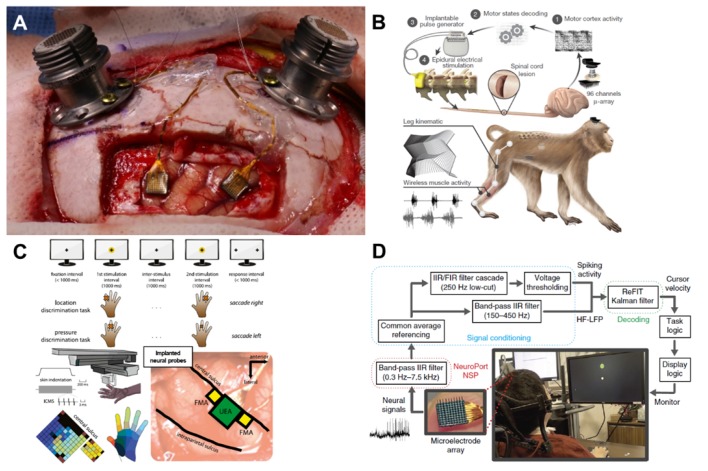Fig. 3. (A) A figure of implanted two 96-channel Utah arrays on a motor and posterior cortex of a non-human primate to record neural signals for an investigation of a brain-machine interfacing platform under approve of Institutional Animal Care and Use Committee at Daegu-Gyeongbuk Medical Innovation Foundation, Korea. (B) A schematic of a brain-spine interface to produce the signal of the spinal cord for walking based on neural activities of the motor cortex. To be specific, neural activities of the motor cortex were recorded by a 96-channel Utah array and decoded information from the acquired neural activities was transmitted to an electrical pulse generator inserted in the spine. The pulse generator produced electrical stimulations for walking of a spine-injured non-human primate. The re-use of this figure published in [
41] was permitted by Nature Publishing Group (Springer Nature). (C) Experimental procedures, a technological setup, and a map of implanted Utah and floating electrode arrays for generating contacting senses in an artificial hand with targeted neuro-stimulations in the somatosensory cortex. This figure in [
42] is re-used with a permission of National Academy of Sciences. (D) A schematic of a paralyzed patient assistant platform based on on-site available neural cursor adjustments from neural signals, which were measured by implanted Utah array. A right figure illustrates radial-8 cursor trajectories of three participants (S3, T6, and T7). The re-use of this figure published in [
47] was approved by Nature Publishing Group (Springer Nature).


